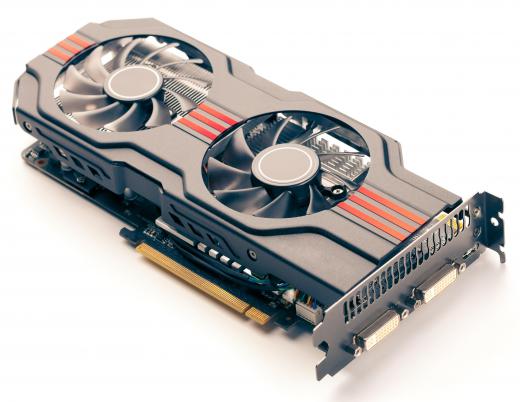A gaming rig is a computer designed specifically to play computer games on. It usually has high-end components in it, as current computer games are among the most hardware intensive programs. Often, one will also feature aesthetic additions, such as colored lighting, display windows, and additional displays.
Games are often built to push the bounds of what computer hardware is designed to achieve. This means that, to have the best playing experience, a gamer will often need a special rig. Although the games can almost always be played without one, this will often result in lower-than-optimal frame rates and sometimes the details, such as shadows, will not be rendered correctly.

A gaming rig will usually have as much processing power as it can, since this is important for running games at their best. The processing power of a computer will often be pushed beyond its normal limits, as well, by "overclocking" the CPU to run faster than it normally would. Since this can cause the computer to overheat, a rig may also include additional cooling. In fact, some use liquid cooling in order to keep the system extremely cool no matter how much the CPU is pushed.

This type of computer also makes use of the fastest RAM and hard drives it can, to reduce latency in running games. Some use multiple disk drive components — called RAID systems — for their hard drives, to further lower the access times for games. Size isn’t particularly important, since most games are relatively small compared to modern hard drives. RAM is still important, however, and most gaming rigs have quite a bit of this type of memory to ensure there is always enough cache space for a game.
One of the key components of a gaming computer is its graphics processing unit (GPU), which is a chip that is devoted exclusively to handling graphics rendering. The GPU on this type of system is usually attached to a dedicated video card, and this allows a game to display its graphics at the highest possible level. Good video cards can be one of the most expensive components, and with high-end physics processing units (PPUs) also being released, these additional cards can make up a good portion of the overall cost.
The case of a gaming rig isn’t functionally terribly important, beyond having adequate room for all of the components. Aesthetically, however, there are a number of modifications that often come along to make it unique. These changes, referred to as case mods, often revolve around making the inside of the machine visible, showing off the expensive and high-end components. Fans may be adorned with LEDs, glass or plastic windows may be inserted into the case to show everything, and etchings or images may be added to various visible surfaces to make the computer a distinct representation of the gamers themselves.
